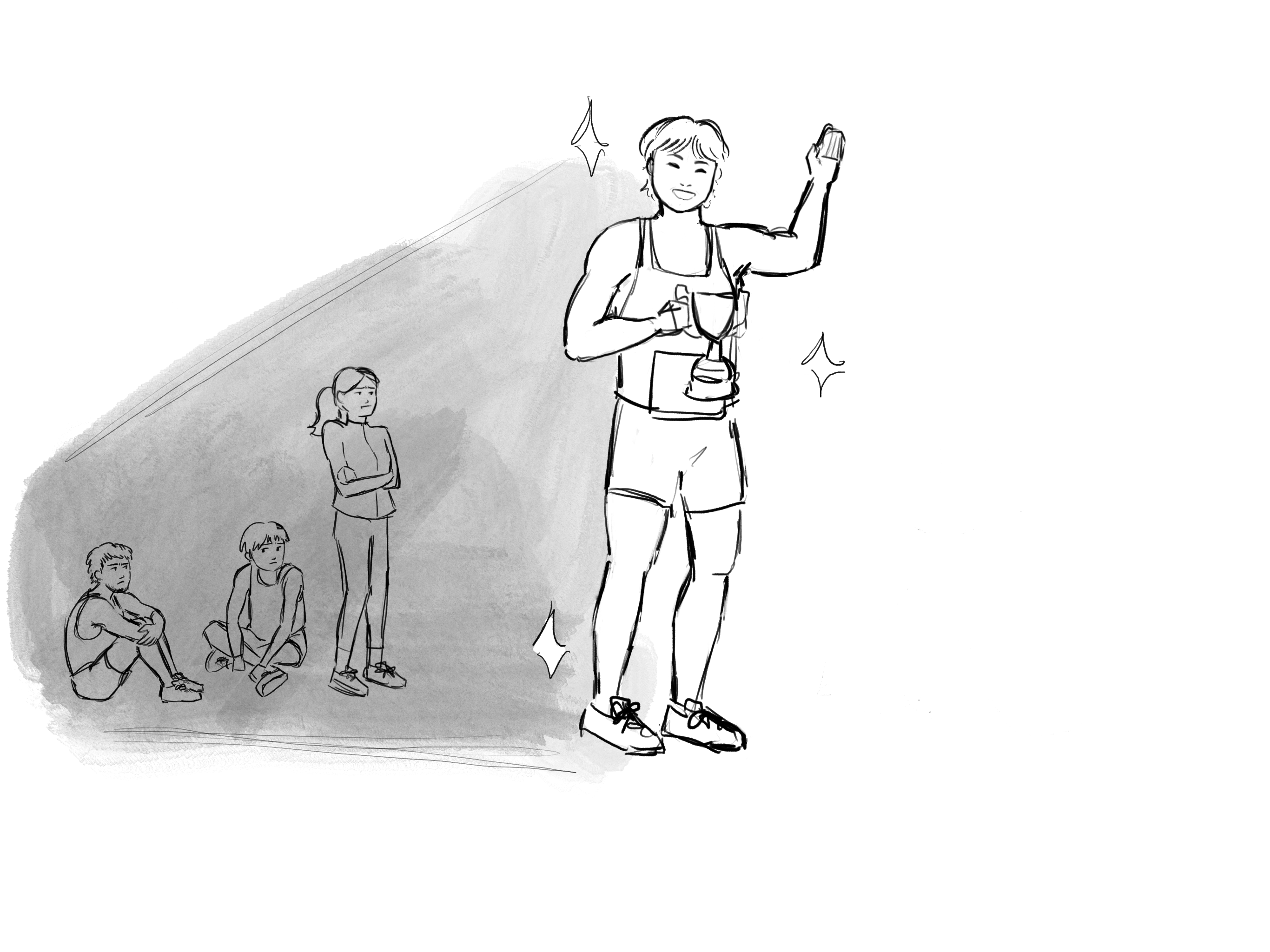The dark side of NIL
April, 2025
Graphic: Katherine Chen
What was once a level playing field for athletes has become a marketplace. Modern college athletics has reached an all-time high in popularity, becoming a multimillion dollar business built on the backs of athletes who have received nothing for their performance. Name, Image, and Likeness (NIL) is an NCAA policy that allows college athletes to earn their own money through branding. This policy prevents brands from misrepresenting athletes or using them to promote their brand without consent. It also allows them to earn cash for brands they choose to represent, eliminating the issue of the NCAA’s lack of compensation. Some opportunities for student athletes to make money through NIL include autographs, merchandise, blogging, commercials, and more. As of 2021, college athletes can make money with the NIL, but some consequences such as wealthier schools gaining more power and student athletes losing focus from their monetary trade have been producing a net negative impact on college sports. Compared to last year's 200 players, more than 1700 athletes in men's college basketball entered the transfer portal on its first day of opening because of their inability to make money and earn recognition in the current colleges they attend. This eliminates a feeling of school loyalty and prevents smaller schools from building better athletic programs, as they are consistently losing their players to the bigger schools with deeper pockets. Because of the branding, schools with publicized athletes will compete more often and in high-level tournaments, while schools with less publicized athletes with the same or better skill may not have the chance to compete in these tournaments, as selection depends on what the audience wants to see. Still, many incoming college athletes look forward to these opportunities. “I think it would be great to be paid for sponsoring someone and use my image to promote their brand. It would be nice to have extra cash for college,” said Sean Wilton ’25, a Brown commit for shot put. The ability for student athletes to promote their brand and receive payment in college has been a debated issue long before the NIL was passed, specifically because supporters of NIL believe that student athletes should earn compensation for what they accomplish. However, opponents of the NIL believe that college freshmen are simply not responsible or experienced enough to handle these large sums of money. Still, the NIL was officially introduced and passed in 2021. In recent years, well-funded powerhouses have poached recruits from smaller colleges with a much higher salary. These temptations are slowly turning the focus of college sports away from what they were originally, which was for athletes to improve and be able to perform their best. At first, the limelight and extra cash earned through NIL policies may seem to benefit student athletes, but over time, it has harmed them. These well-funded schools are also more attractive to recruits looking for colleges, creating situations where student athletes are choosing schools for the money, rather than what is the best fit for them. Not only does this create a negative culture, but it also often results in going “one and done” through college, meaning they go to school for only 1 year without graduating to immediately pursue their sport professionally. This leaves athletes in difficult situations if they are plagued by injury or other careerending issues and do not have a college degree to choose a different career. Schools without branding and NIL money don’t get the same chance to recruit better players and be shown more to a national audience. Therefore, athletes who want to be recognized for their talents and make a cash surplus must attend colleges with highly publicized athletes. These well-funded schools ultimately make student-athletes into athlete-students. Despite the benefits of NIL, some athletes are finally seeing the downsides. “I think right now [NIL’s] actually impacting them for the worse,” said Wilton. “It is hurting more athletes than helping them in some way.” To prevent conflicts such as unfairness and loss of focus, players and coaches could push for NCAArecognized restrictions on NIL. One potential solution could be to implement a NIL budget for every school to abide by, regardless of size or wealth, similar to a salary cap in the NFL and NBA. Additionally, policies could be used to regulate player agreements with NIL deals, such as a loyalty clause, where students must stay with a school they commit to for at least 2 years, to ensure both the school and the athlete have equal benefits. This proposition would not only create an equality amongst colleges and universities in terms of NIL usage, but also give college players a better overall college experience. The initial intentions of the creation of NIL were morally correct in the sense of giving college athletes what they deserve for their hard work, given the amount of money the industry makes. However, there have been many hidden flaws that could have serious negative effects on college athletes' experiences as they go through their careers. This requires action against the current forms of NIL, and restrictions need to be made before college athletics are changed forever. If college sports continue to uphold this negative culture, school spirit and built-up talent will be replaced by business proposals and short-term gains, leaving behind the true meaning of the game.